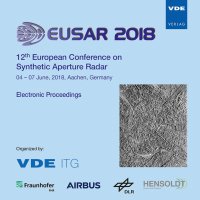Observation of Snow Covered Urban Area Using ALOS-2 Data
Conference: EUSAR 2018 - 12th European Conference on Synthetic Aperture Radar
06/04/2018 - 06/07/2018 at Aachen, Germany
Proceedings: EUSAR 2018
Pages: 4Language: englishTyp: PDF
Personal VDE Members are entitled to a 10% discount on this title
Authors:
Sato, Ryoichi; Hayashi, Shusei; Yamaguchi, Yoshio; Yamada, Hiroyoshi (Niigata University, Japan)
Abstract:
We show observation result for snow covered or uncovered urban area using quad-pol ALOS-2/PALSAR-2 data. From the result of the observation for autumn and winter seasons, double bounce scattering contribution decreases and surface scattering contribution increases for the snow covered case, even when radar illumination direction is almost normal to the alignment of urban buildings. To determine the exact cause of the scattering behavior and minutely evaluate the polarimetric features, ‘collective’ reflected field, which approximately includes all of the multiple reflections inside multi-layered snow, is introduced for additional consideration. By using the collective reflection coefficient, instead of the conventional Fresnel coefficient, one can evaluate the reflection characteristics not only from the surface of the top snow layer but also from all of the internal reflections of each snow layer easily. It is found from the result for the dihedral structure between the three-layered snow plane and vertical concrete wall that the dominant contribution sometimes changes from the double bounce scattering to the surface scattering even when the surface of the top layer of the snow is flat.


